I've had this sitting in my to-do box for years. I love these old Sheffield wedges.
While the blade isn't too bad it does have serious honeware and the scales are in very poor condition.
I usually dremel out the pins with a diamond ball to protect the scales but because of the condition I went straight to the flush cutters.
The scales were badly de-laminated so I started sanding away the years.
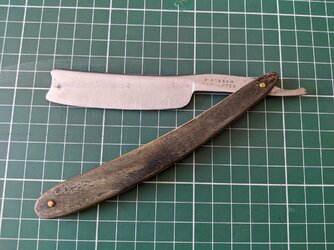
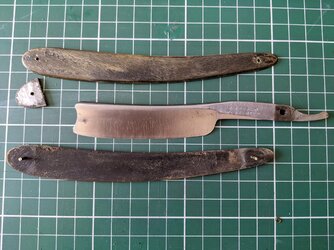
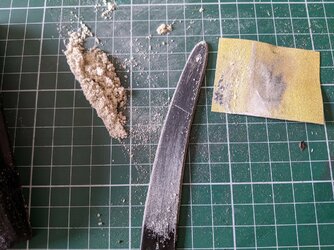
After sanding the faces of the scales I thought I'd leave some of the age of the razor there and lightly sanded the edges just enough to knock down any rough spots. They're smooth but show their age. Outside for a buff they shined up nicely, the blade was sanded separately and given a light polish.
I left a spot near the pivot pin that was deep enough where if I were to sand down to that level it could compromise the integrity of the scales. The faces of the scales a re mirror apart from that.

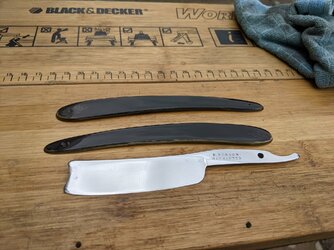
I decided to go minimalist with the classic small washers when repinning. Fancy collars just wouldn't have looked right.
Nice that it has a real lead wedge too.
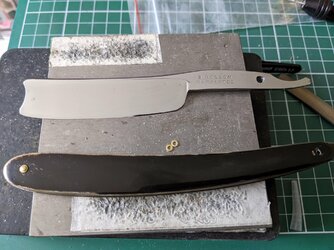
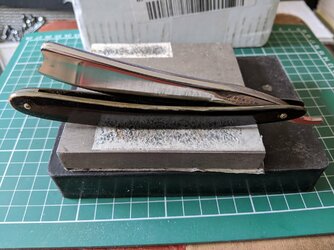
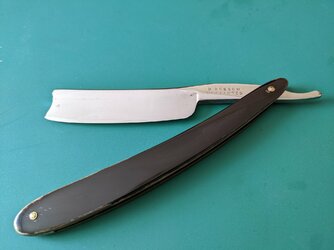
Did I mention I love wedges
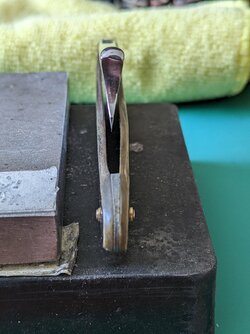
Honing was interesting with some wacky spinewear. The spine at the toe was pitted and about 0.05mm narrower than the rest. I didn't know that at honing time but it became obvious when 2/3rds of the blade was sharp but the toe was nowhere near done. I was using a layer of tape and doubled the last 1/3rd so I could reach the toe while ensuring some bevel uniformity. 1 layer of tape leaves a fairly wide bevel but that's just the way it goes.
1.5k Shapton for bevel and the rest with a selected coticule, dilucot and to under running water.
A typical silent wedge shave this thing goes throughbone stubble like butter but the smoothness is where it excelled. Virtually no allum sting after a 3 pass shave so I'm happy to add it to the rotation.

While the blade isn't too bad it does have serious honeware and the scales are in very poor condition.
I usually dremel out the pins with a diamond ball to protect the scales but because of the condition I went straight to the flush cutters.
The scales were badly de-laminated so I started sanding away the years.



After sanding the faces of the scales I thought I'd leave some of the age of the razor there and lightly sanded the edges just enough to knock down any rough spots. They're smooth but show their age. Outside for a buff they shined up nicely, the blade was sanded separately and given a light polish.
I left a spot near the pivot pin that was deep enough where if I were to sand down to that level it could compromise the integrity of the scales. The faces of the scales a re mirror apart from that.


I decided to go minimalist with the classic small washers when repinning. Fancy collars just wouldn't have looked right.
Nice that it has a real lead wedge too.



Did I mention I love wedges

Honing was interesting with some wacky spinewear. The spine at the toe was pitted and about 0.05mm narrower than the rest. I didn't know that at honing time but it became obvious when 2/3rds of the blade was sharp but the toe was nowhere near done. I was using a layer of tape and doubled the last 1/3rd so I could reach the toe while ensuring some bevel uniformity. 1 layer of tape leaves a fairly wide bevel but that's just the way it goes.
1.5k Shapton for bevel and the rest with a selected coticule, dilucot and to under running water.
A typical silent wedge shave this thing goes through